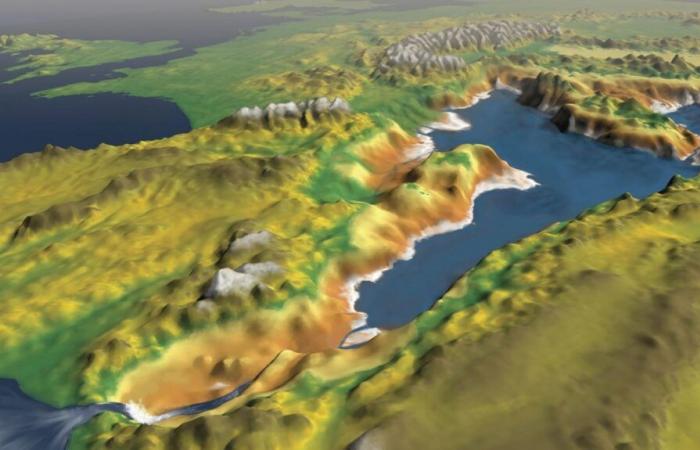Vincent Nouyrigat, editor-in-chief of magazine Epsilon today looks at the recent study by researchers who have just retraced the scenario of a major geological crisis in the Mediterranean, several million years ago.
franceinfo: Are we talking about the disappearance, the virtual disappearance of the Mediterranean Sea?
Vincent Nouyrigat: It may seem quite shocking: around 6 million years ago, this sea began to drain like a bathtub. Or rather, it evaporated. Everything played out at the Strait of Gibraltar, which at the time was gradually closing under the effect of plate tectonics.
Now it is a truly strategic place: it is through this strait that the surface waters of the Atlantic fill the Mediterranean; the large rivers which flow into it, such as the Rhône or the Nile, are unable to compensate for the evaporation of this warm sea. It is also here that the Mediterranean evacuates its excess salt via deep currents.
Scientists were aware of this episode of the gradual closure of Gibraltar, but the new study has just clarified the consequences: a virtual disappearance of the Mediterranean, in the space of 10,000 years by simple evaporation, with a drop in sea level ‘approximately 2000 meters, to the east of the Mediterranean basin and 850 meters to the west; the two parts are separated by the escarpment of the Strait of Sicily. In all, 70% of the water volume has vanished!
And a truly astonishing landscape appeared ?
Yes, it no longer has anything to do with the big blue: there were then only a few residual lakes of extremely brackish water, comparable to the current Dead Sea, very unfavorable for life.
The Mediterranean has in fact become a landscape made up of veritable salt mountains; thicknesses of several hundred or thousands of meters have accumulated here. An incongruous landscape traversed by terrestrial species, ancestors of camels, or even goats who were able to colonize islands like Majorca.
This new territory was perhaps not so peaceful: the disappearance of water in fact alleviated the pressures exerted on the earth’s crust, and stimulated the volcanic activity of the region, by facilitating the passage of magma. The local climate could also have been turned upside down.
But, all the same, the Mediterranean has reformed ?
Of course, as we can see today: after around 600,000 years, this crisis ended in an extraordinarily brutal way. The details are little known, but it seems that a gigantic waterfall with a flow rate a thousand times greater than the Amazon, perhaps at the level of Gibraltar, has refilled the Mediterranean basin, in the space of barely two years.
And the fish came back; not all, of course, another study published this summer shows that only 11% of endemic species in the Mediterranean have survived in one way or another the drying; the coral reefs that once reigned, for example, have completely disappeared.
It took a long time, but a new biodiversity has managed to reconstitute itself here, with the arrival of new species, such as dolphins, or great white sharks, which were until now absent.
At a time when global warming is weighing on the Mediterranean, many researchers are studying this cataclysm and trying to learn lessons from it. These disasters of the past make us tremble, but they also give a little hope in the ability of living things to survive the unthinkable.






